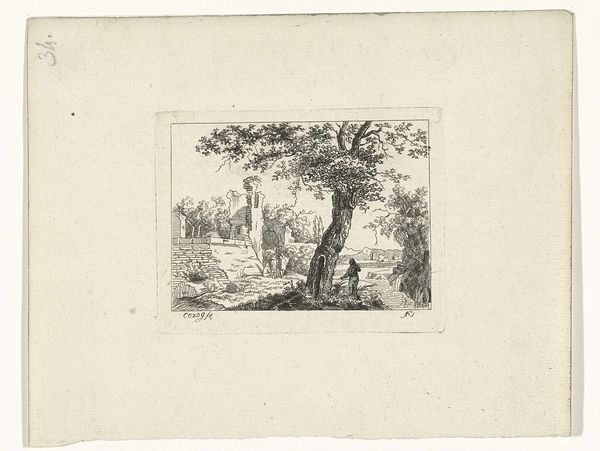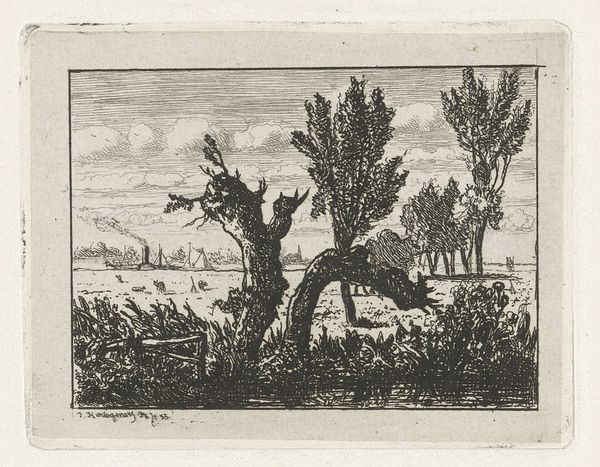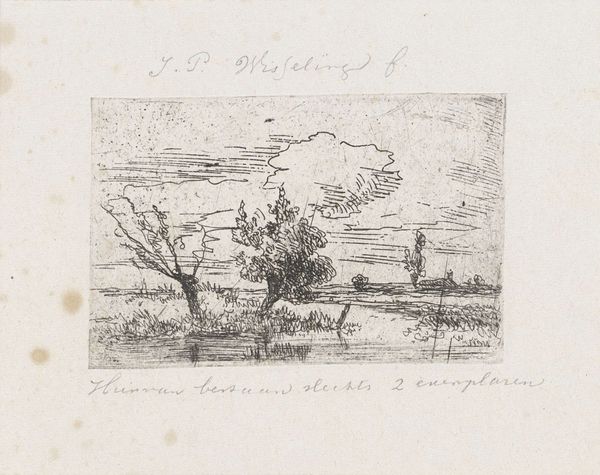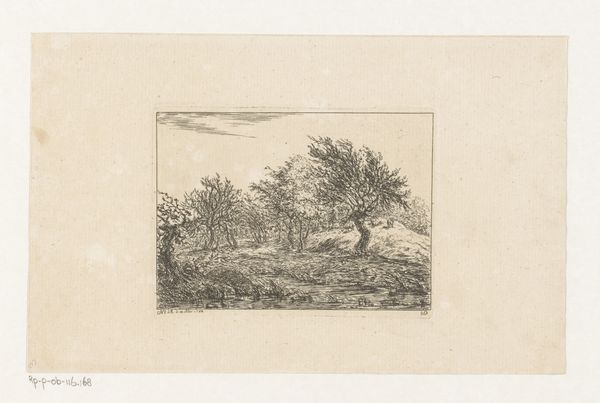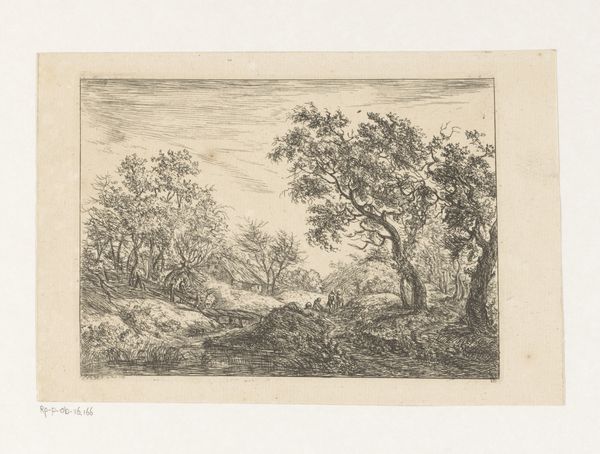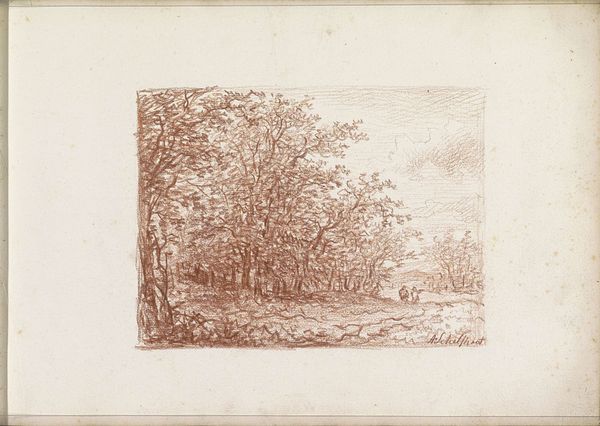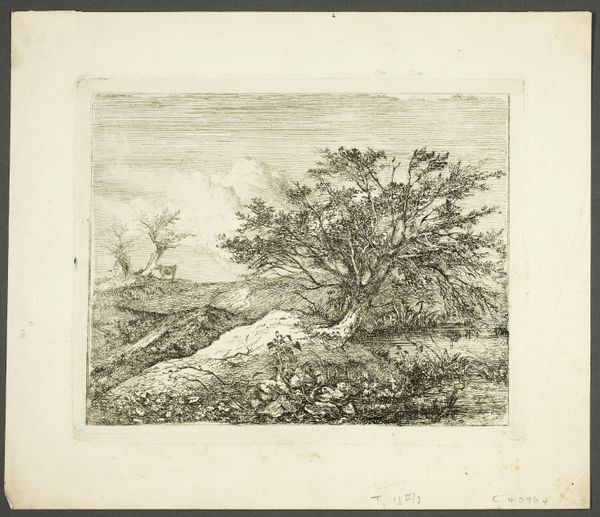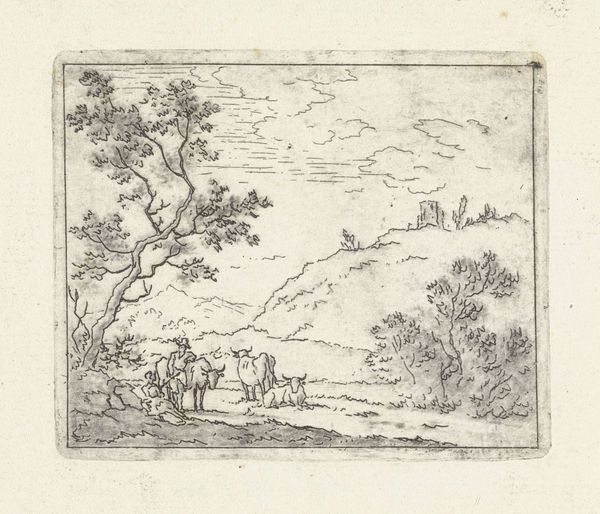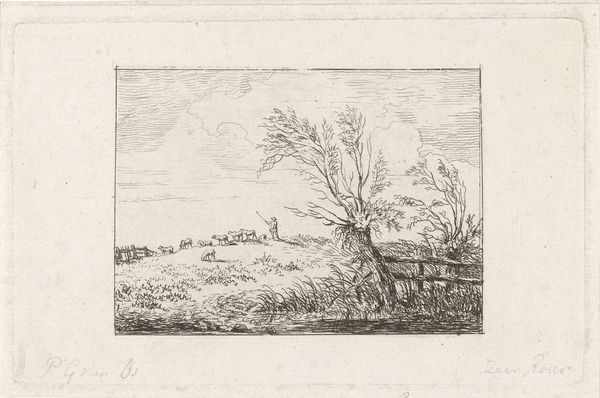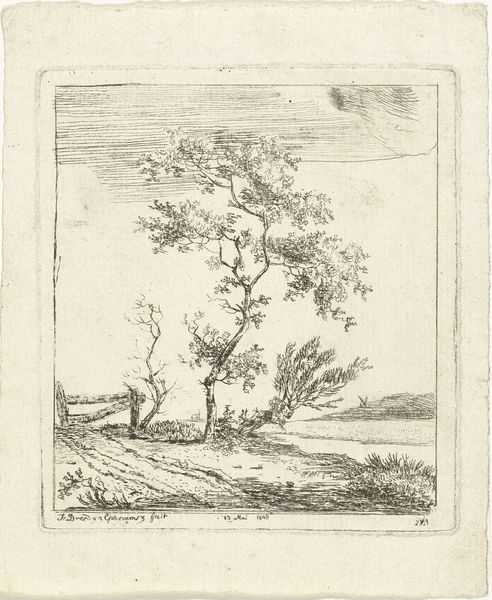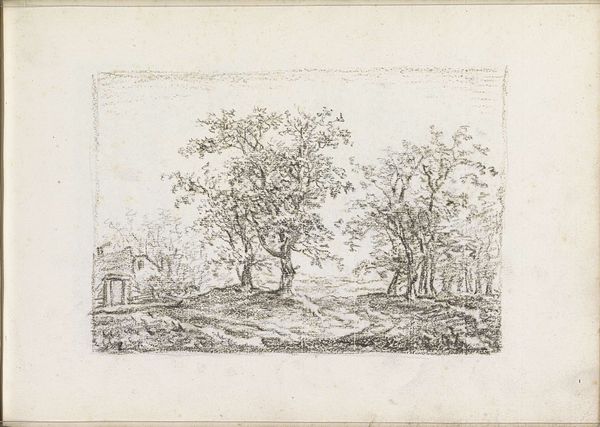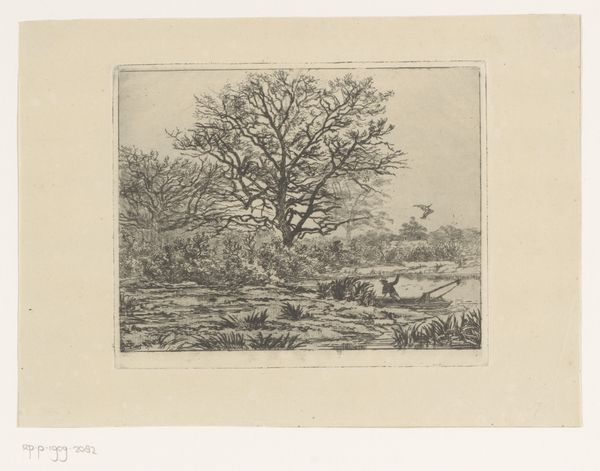
drawing, print, etching, pen
#
drawing
# print
#
pen sketch
#
etching
#
pencil sketch
#
landscape
#
pen-ink sketch
#
pen
#
watercolour illustration
#
realism
Dimensions: height 63 mm, width 82 mm
Copyright: Rijks Museum: Open Domain
Curator: This delicate etching, titled *Landschap met knotwilgen* or *Landscape with pollard willows*, dates back to 1855 and is the work of Joseph Hartogensis. Editor: The first impression I get is one of stillness and quiet contemplation. There’s a melancholic atmosphere evoked by the muted tones and sparse landscape. Curator: That feeling, I think, stems from the context of Hartogensis' life and the social climate of the time. The mid-19th century in the Netherlands was a period of significant social and economic change. Consider the pollard willows. They are not natural; these trees speak to intervention. We must reflect on human control and utilization of nature. Editor: Yes, that manipulation of the natural form is interesting. Pollarding is a recurring motif throughout art history. Beyond the practical need for firewood, what is its symbolic weight in a piece like this? The way their branches are severed creates such gnarled shapes and in that shape I find strength. They are testament to the resilience and resourcefulness. Curator: Absolutely. We could interpret this as reflecting broader societal resilience during times of change. It connects to the ongoing debate around land ownership, labor, and the rights of marginalized communities of that era. The artist is quite literally sketching the tension between natural and manufactured constraints. Editor: It's fascinating how such a simple scene can hold so many layers. The symbolism embedded in the image is enhanced by the textural richness of the etching itself. Hartogensis skillfully uses the technique to build a scene not of an untouched pastoral idyll, but a scene reflecting both labor and landscape. Even those wispy clouds—they convey such temporality and a reminder that, like the trees, we too, are always weathering change. Curator: I concur. Seeing art this way, understanding it within these power structures, challenges conventional interpretations and allows for a much richer dialogue with the art of the past and our current times. Editor: It reminds us that even seemingly simple landscapes can reflect complex relationships between people and their environments. There's always a deeper story etched beneath the surface.
Comments
No comments
Be the first to comment and join the conversation on the ultimate creative platform.
